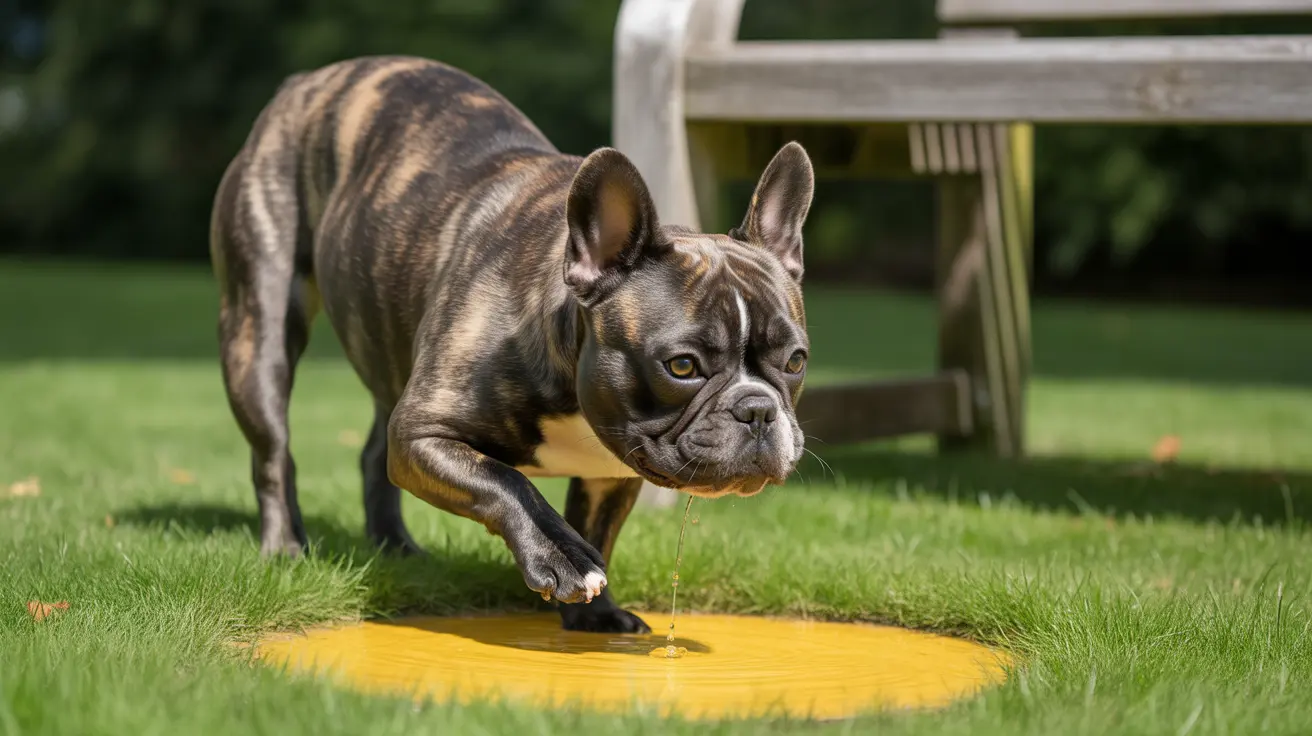Understanding Normal vs. Abnormal Dog Urine
If you've noticed your dog's urine becoming very yellow and particularly smelly, you're not alone. While some variation in urine color and odor is normal, significant changes can signal important health issues that deserve attention.
Understanding what causes these changes and knowing when to be concerned can help ensure your dog stays healthy. Let's explore the main factors that influence your dog's urine characteristics and what they might mean for your pet's health.
Common Causes of Yellow and Smelly Dog Urine
Dehydration: The Primary Culprit
The most common reason for very yellow and strong-smelling dog urine is dehydration. When your dog isn't drinking enough water, their urine becomes more concentrated, leading to a darker yellow color and more intense odor. This concentration of waste products makes the characteristic urine smell much more noticeable.
Dietary Influences
What your dog eats plays a crucial role in their urine characteristics. High-protein diets often result in stronger-smelling urine due to the breakdown of protein molecules. Similarly, certain ingredients in commercial dog foods can affect both the color and odor of your pet's urine.
Medical Conditions That Affect Urine
Urinary Tract Infections
UTIs can cause your dog's urine to become more yellow and develop an unusually strong or foul odor. These infections often come with other symptoms like frequent urination and discomfort while urinating.
Liver and Kidney Issues
Problems with these vital organs can affect how your dog's body processes waste, potentially leading to changes in urine color and smell. These conditions require immediate veterinary attention.
Solutions and Prevention
Proper Hydration
Ensure your dog always has access to fresh, clean water. Consider using pet fountains or multiple water stations around your home to encourage drinking. The goal is to keep your dog well-hydrated throughout the day.
Diet Adjustments
Feed your dog high-quality food appropriate for their age and size. Avoid sudden dietary changes, and consult your veterinarian about the best food choices for your pet's specific needs.
When to See a Veterinarian
While some urine changes are temporary and harmless, others require professional attention. Contact your vet if you notice:
- Persistently dark yellow or strong-smelling urine
- Blood in the urine
- Changes in urination frequency or volume
- Other concerning symptoms like lethargy or loss of appetite
Frequently Asked Questions
Why is my dog's pee suddenly very yellow and has a strong smell?
Sudden changes in urine color and odor are often due to dehydration, dietary changes, or underlying medical conditions. If the changes persist for more than 24 hours, consult your veterinarian.
Can dehydration cause bright yellow and smelly urine in dogs?
Yes, dehydration is a primary cause of concentrated, yellow, and strong-smelling urine in dogs. Ensuring proper hydration usually resolves these issues.
What foods or supplements can make my dog's urine smell worse?
High-protein diets, certain supplements (especially B vitamins), and foods rich in sulfur compounds can intensify urine odor. Some commercial dog foods with artificial preservatives may also affect urine smell.
When should I worry about my dog's yellow urine and smelly pee and see a vet?
Seek veterinary care if changes persist beyond 24-48 hours, or if accompanied by other symptoms like excessive thirst, frequent urination, lethargy, or changes in appetite.
How can urinary tract infections affect the color and odor of my dog's urine?
UTIs typically cause urine to become more concentrated and develop a strong, often foul odor. The urine may also appear cloudy or contain blood, and your dog might show signs of discomfort while urinating.
Conclusion
While yellow and smelly dog urine often indicates simple dehydration, persistent changes should never be ignored. By monitoring your dog's urine characteristics and understanding what different changes might mean, you can better protect your pet's health and know when to seek professional help.






